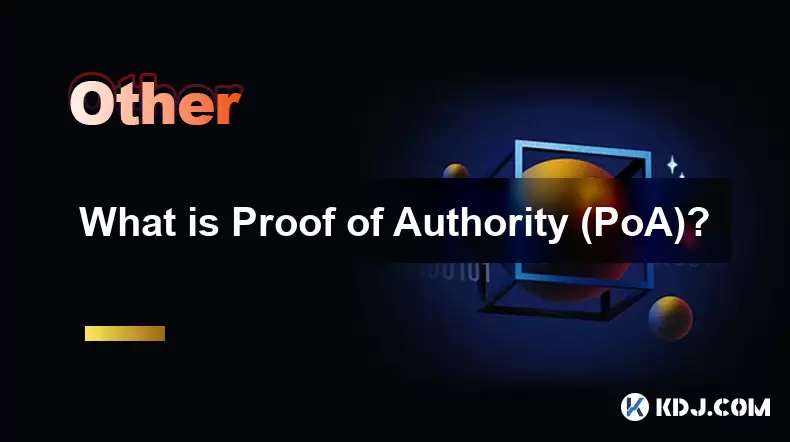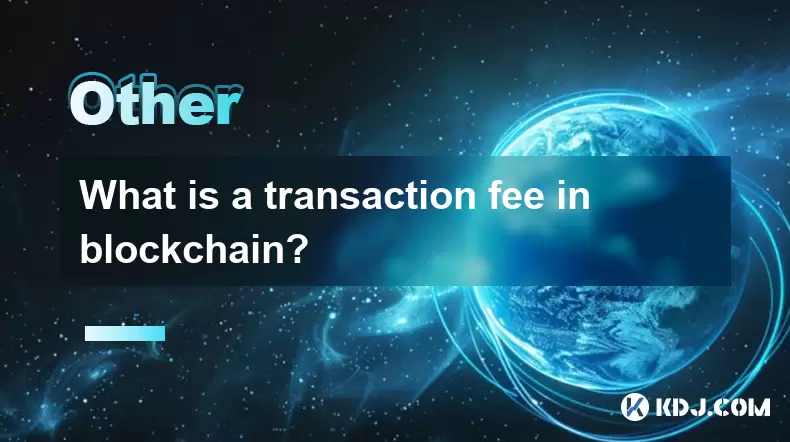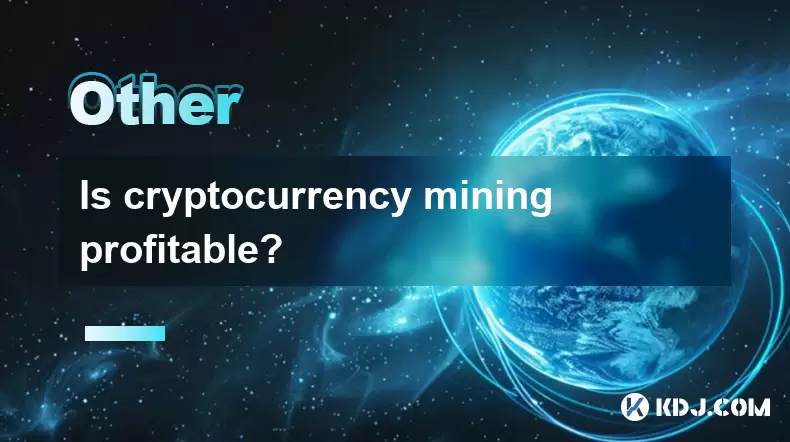-
 Bitcoin
Bitcoin $116700
0.24% -
 Ethereum
Ethereum $3973
4.34% -
 XRP
XRP $3.283
7.68% -
 Tether USDt
Tether USDt $1.000
0.01% -
 BNB
BNB $789.8
2.27% -
 Solana
Solana $176.2
3.31% -
 USDC
USDC $0.9999
0.00% -
 Dogecoin
Dogecoin $0.2238
5.14% -
 TRON
TRON $0.3389
-0.51% -
 Cardano
Cardano $0.7907
4.03% -
 Stellar
Stellar $0.4527
10.02% -
 Hyperliquid
Hyperliquid $41.07
4.27% -
 Sui
Sui $3.794
1.77% -
 Chainlink
Chainlink $19.49
10.40% -
 Bitcoin Cash
Bitcoin Cash $580.9
0.74% -
 Hedera
Hedera $0.2617
4.32% -
 Avalanche
Avalanche $23.41
3.67% -
 Ethena USDe
Ethena USDe $1.001
-0.03% -
 Litecoin
Litecoin $122.4
1.38% -
 Toncoin
Toncoin $3.364
1.49% -
 UNUS SED LEO
UNUS SED LEO $8.988
0.37% -
 Shiba Inu
Shiba Inu $0.00001295
2.82% -
 Uniswap
Uniswap $10.62
5.75% -
 Polkadot
Polkadot $3.922
4.46% -
 Dai
Dai $1.000
0.01% -
 Bitget Token
Bitget Token $4.494
2.15% -
 Monero
Monero $268.0
-1.30% -
 Cronos
Cronos $0.1523
3.68% -
 Pepe
Pepe $0.00001127
4.43% -
 Aave
Aave $285.4
4.85%
What is Proof of Authority (PoA)?
Proof of Authority (PoA) relies on trusted, pre-approved validators whose real-world identity ensures accountability, enabling fast, secure, and energy-efficient blockchain transactions.
Aug 09, 2025 at 05:01 am

Understanding Proof of Authority (PoA)
Proof of Authority (PoA) is a consensus mechanism used in blockchain networks to validate transactions and create new blocks. Unlike Proof of Work (PoW) or Proof of Stake (PoS), PoA does not rely on mining or staking cryptocurrency. Instead, it depends on a select group of pre-approved validators who are responsible for confirming transactions and maintaining the integrity of the network. These validators are identified individuals or entities whose identity and reputation are staked in the system. The core principle of PoA is trust through identity and accountability, making it particularly suitable for private or consortium blockchains.
In a PoA network, only authorized validators can produce blocks. These validators are chosen based on their verified identity and proven reliability. Because their real-world identity is known and tied to their role, they have a strong incentive to act honestly. Any malicious behavior or failure to perform duties can result in loss of reputation and removal from the validator set. This mechanism reduces the risk of attacks such as double-spending or 51% attacks, which are more feasible in anonymous systems.
How Proof of Authority Works
The operation of a PoA consensus involves several key components: identity verification, block creation, and transaction validation. Validators must first undergo a rigorous identity verification process before being granted authority. Once approved, they are entrusted with the responsibility of proposing and validating new blocks.
- Validators take turns to generate new blocks based on a predetermined algorithm, such as round-robin scheduling.
- Each block is cryptographically signed by the validator, ensuring traceability and authenticity.
- Other nodes in the network verify the signature and the correctness of transactions within the block.
- If the block passes validation, it is added to the blockchain.
- Validators are expected to remain online and responsive; prolonged inactivity can lead to temporary suspension.
This process ensures fast transaction finality and high throughput. Because there is no need for energy-intensive computations or large stake holdings, PoA networks achieve efficiency in both time and resource usage. Networks like VeChain and POA Network have successfully implemented PoA to support enterprise-grade applications requiring speed and reliability.
Differences Between PoA and Other Consensus Mechanisms
PoA stands apart from other consensus models in several fundamental ways. In Proof of Work (PoW), miners compete to solve complex mathematical puzzles, requiring substantial computational power and energy. In contrast, PoA eliminates this competition by assigning block production rights to trusted nodes.
Similarly, Proof of Stake (PoS) selects validators based on the amount of cryptocurrency they hold and are willing to "stake" as collateral. While PoS introduces economic disincentives for bad behavior, it can still be influenced by wealth concentration. PoA, however, prioritizes identity and reputation over financial investment.
- Validator selection in PoA is based on real-world identity and authorization, not computational power or token holdings.
- Transaction speed in PoA is significantly faster due to the limited number of validators and absence of mining delays.
- Energy consumption is minimal, making PoA environmentally friendly compared to PoW.
- Centralization concerns are higher in PoA, as control is concentrated among a few known entities.
These distinctions make PoA ideal for permissioned blockchains where participants are known and regulated, such as supply chain management or enterprise data tracking systems.
Setting Up a PoA Network: Step-by-Step Guide
Creating a PoA-based blockchain requires careful configuration of nodes and consensus rules. One of the most common platforms for implementing PoA is Geth (Go Ethereum) with the Clique consensus engine. Below is a detailed guide to setting up a simple PoA network.
- Install Geth on all participating machines and ensure it is updated to the latest version.
- Initialize a custom genesis file that defines the network parameters, including the use of the Clique engine.
- Set the "clique" configuration in the genesis file with parameters like period (block time in seconds) and epoch (number of blocks after which votes are reset).
- Generate Ethereum addresses for each validator and include them in the "extraData" field of the genesis block using hex-encoded format.
- Distribute the genesis file to all nodes and initialize the blockchain using the command
geth init genesis.json. - Start each node with the
--syncmode 'full',--networkid, and--portflags, enabling the--mineand--miner.threadsoptions on validator nodes. - Use the
personal.signercommands to allow validators to sign blocks and authorize transactions.
After setup, monitor node connectivity using admin.peers and verify block production through eth.blockNumber. Ensure all validators are synchronized and producing blocks at regular intervals defined by the "period" value in the genesis file.
Security and Trust Model in PoA
The security of a PoA network hinges on the reputation and accountability of its validators. Since each validator is a known entity, their actions are transparent and traceable. This transparency discourages malicious behavior because any wrongdoing can lead to legal or organizational consequences.
Networks often implement voting mechanisms where validators can vote to add or remove other validators. This allows the network to adapt to changes while maintaining control within trusted parties. For example, if a validator node goes offline frequently, others can vote to replace it.
- Validators must maintain high uptime to ensure network stability.
- Private keys used for signing blocks must be stored securely, preferably in hardware security modules (HSMs).
- Regular audits and identity re-verification help maintain the integrity of the validator set.
- The limited number of validators reduces attack surface but increases dependency on each node’s reliability.
Despite its strengths, PoA is vulnerable to collusion if a majority of validators act dishonestly. Therefore, governance structures must ensure diversity and independence among validators to prevent centralization of power.
Use Cases and Real-World Implementations
PoA is widely adopted in environments where speed, scalability, and regulatory compliance are critical. The VeChainThor blockchain uses PoA to enable transparent supply chain tracking for luxury goods, pharmaceuticals, and food safety. Validators on VeChain are selected from reputable organizations, ensuring trust in data integrity.
Another example is the Binance Smart Chain (BSC), which initially used a PoA-inspired model before transitioning to a more hybrid approach. Enterprise solutions like Microsoft Azure’s Blockchain Workbench also support PoA for building private blockchains tailored to business needs.
- Enterprise logistics benefit from PoA’s fast confirmation times and auditability.
- Government registries use PoA to maintain tamper-proof land or identity records.
- Inter-company networks leverage PoA to share data securely among known partners.
These applications demonstrate that PoA is not designed for decentralized, public networks like Bitcoin, but rather for controlled ecosystems where trust is established through identity.
Frequently Asked Questions
Can anyone become a validator in a PoA network?
No. Validators must be pre-approved based on verified identity and trustworthiness. The selection process is controlled by the network’s governing body, and new validators are typically added through a voting mechanism among existing ones.
Is Proof of Authority decentralized?
PoA is considered semi-decentralized or permissioned. While multiple validators participate, the network is not open to the public. Control is limited to authorized entities, making it less decentralized than PoW or PoS.
What happens if a PoA validator goes offline?
If a validator fails to produce blocks within the expected timeframe, the network may skip their turn. Persistent inactivity can trigger a vote to remove them from the validator set, ensuring network continuity.
How does PoA handle forks?
In PoA, forks are rare due to the deterministic block production schedule. When they occur, the chain with the most valid signatures from authorized validators is considered the canonical one. Nodes automatically reorganize to follow this chain.
Disclaimer:info@kdj.com
The information provided is not trading advice. kdj.com does not assume any responsibility for any investments made based on the information provided in this article. Cryptocurrencies are highly volatile and it is highly recommended that you invest with caution after thorough research!
If you believe that the content used on this website infringes your copyright, please contact us immediately (info@kdj.com) and we will delete it promptly.
- Coinbase, Cosmos, and dYdX: Navigating the Crypto Currents
- 2025-08-09 06:30:16
- BNB Price, Altcoins, and Predictions: What's the Buzz?
- 2025-08-09 06:30:16
- Crypto Presale Projects Primed for Gains in 2025: A New Yorker's Take
- 2025-08-09 06:50:15
- Ruvi AI: The Millionaire Maker Poised for a Price Spike?
- 2025-08-09 06:50:15
- Cold Wallet, CoinMarketCap, Cardano & XRP: Navigating Crypto's Next Big Wave
- 2025-08-09 07:10:15
- Hedera (HBAR) Price Surge: Market Cap Soars, What's Next?
- 2025-08-09 07:10:15
Related knowledge

What is a transaction fee in blockchain?
Aug 08,2025 at 09:21pm
Understanding the Basics of Blockchain Transaction FeesA transaction fee in blockchain is a small amount of cryptocurrency paid by a user to process a...

Is cryptocurrency mining profitable?
Aug 09,2025 at 01:28am
Understanding Cryptocurrency Mining BasicsCryptocurrency mining is the process by which new digital coins are introduced into circulation and transact...

What is Proof of Authority (PoA)?
Aug 09,2025 at 05:01am
Understanding Proof of Authority (PoA)Proof of Authority (PoA) is a consensus mechanism used in blockchain networks to validate transactions and creat...

What is the purpose of a nonce in mining?
Aug 04,2025 at 05:56pm
Understanding the Role of a Nonce in Cryptocurrency MiningIn the world of cryptocurrency mining, the term nonce stands for 'number used only once.' Th...

Can data on a blockchain be deleted?
Aug 05,2025 at 04:00am
Understanding Blockchain ImmutabilityThe core principle behind most blockchain systems is immutability, which means that once data is recorded onto th...

What is the difference between on-chain and off-chain transactions?
Aug 02,2025 at 04:22pm
Understanding On-Chain TransactionsOn-chain transactions refer to digital asset transfers that are recorded directly on a blockchain ledger. These tra...

What is a transaction fee in blockchain?
Aug 08,2025 at 09:21pm
Understanding the Basics of Blockchain Transaction FeesA transaction fee in blockchain is a small amount of cryptocurrency paid by a user to process a...

Is cryptocurrency mining profitable?
Aug 09,2025 at 01:28am
Understanding Cryptocurrency Mining BasicsCryptocurrency mining is the process by which new digital coins are introduced into circulation and transact...

What is Proof of Authority (PoA)?
Aug 09,2025 at 05:01am
Understanding Proof of Authority (PoA)Proof of Authority (PoA) is a consensus mechanism used in blockchain networks to validate transactions and creat...

What is the purpose of a nonce in mining?
Aug 04,2025 at 05:56pm
Understanding the Role of a Nonce in Cryptocurrency MiningIn the world of cryptocurrency mining, the term nonce stands for 'number used only once.' Th...

Can data on a blockchain be deleted?
Aug 05,2025 at 04:00am
Understanding Blockchain ImmutabilityThe core principle behind most blockchain systems is immutability, which means that once data is recorded onto th...

What is the difference between on-chain and off-chain transactions?
Aug 02,2025 at 04:22pm
Understanding On-Chain TransactionsOn-chain transactions refer to digital asset transfers that are recorded directly on a blockchain ledger. These tra...
See all articles

























































































